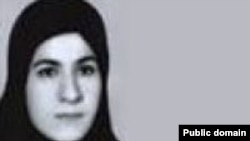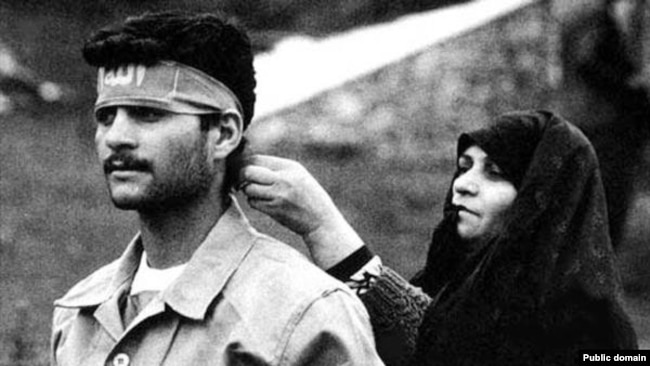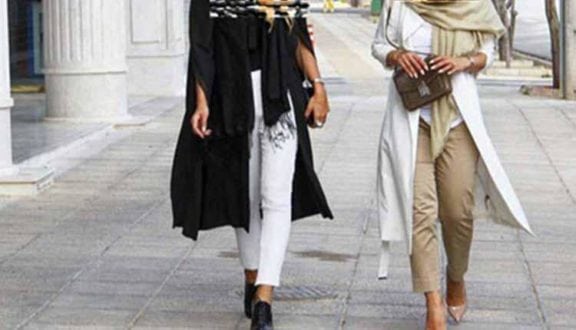RFL/RE – Shahnaz Haji Shah was 26 years old in September 1980 when she was killed by an Iraqi mortar in the southwestern Iranian port city of Khoramshahr near the border with Iraq.
Days earlier, Iraq had invaded Iran, launching air strikes and a ground invasion.
Khoramshahr was under constant shelling for weeks before it was seized by the Iraqi forces. Haji Shah remained in Khoramshahr and vowed to defend the city.
Just before she was killed, Haji Shah reportedly saved the life of a wounded Iranian soldier.
According to accounts by her relatives, she was struck in the heart by a mortar fragment as she was rushing towards a house that had been shelled to try to help anyone inside.
In the heat of the ongoing battle, only five people attended Haji Shah’s burial in a local cemetery — including her mother and her brothers. They scratched her name onto a makeshift tombstone that allowed the family to find her remains after Iranian forces recaptured the city in 1982.
Haji Shah is now hailed in Iran as Khoramshahr’s first woman martyr.
In fact, Haji Shah is among nearly 6,500 Iranian women who were killed during the devastating 1980-1988 war with Iraq that left about 1 million people dead on both sides.
But while Haji Shah’s short life and bravery has been documented and covered by Iranian media, critics say little attention has been paid to the plight of thousands of other women who were war victims. Only a few of the so-called women martyrs have been officially honored.
Traditional Roles
Some 500 Iranian women reportedly fought as combatants during the war. Official figures cited by Iranian media say nearly 25,000 female doctors, nurses, and aid workers also served on the front lines.
Many Iranian women who lived in the battle zones also are reported to have been subjected to violence by the invading Iraqi forces, including rape.
In addition, hundreds of thousands of women lost their husbands and children in the war.

Some war widows were pressured into remarrying the brothers of their slain husbands. Many others struggled to make ends meet during and after the war to raise their children as single mothers.
Iranian state media have named five Iranian women who were captured by Iraqi forces, without specifying whether they were combatants. According to some reports, up to 170 Iranian women were prisoners of war in Iraqi custody.
In many war images promoted by Iran’s conservative clerical establishment, women have been projected in traditional roles — cooking or knitting for soldiers, saying farewell to male relatives dispatched to battle, or appearing on state TV to express content over “the martyrdom” of their sons and husbands.
But now, in a rare acknowledgment, the head of Iran’s state Foundation for the Preservation of Sacred Defense Works and Values has admitted that the role of women during the war has been “ignored.”
Brigadier General Bahman Kargar said on September 22 that some women had “great achievements” during the war.
“We are ready to pursue naming sites after female martyrs because we believe the role of women in the Sacred Defense has been ignored,” Kargar said in remarks quoted by the semiofficial ISNA news agency on the 39th anniversary of the start of the war.
Numerous squares, highways, streets, bridges, murals, and other public sites have been named after the estimated 200,000 Iranian soldiers killed during the war. But the number of sites devoted to female war victims is negligible.
The reformist Shargh daily has quoted an unnamed municipal employee in Tehran as saying that out of 18,000 streets in the Iranian capital, only five are named after female war victims. All are alleyways or dead-end streets.
Activists say the prevalence of patriarchy, sexism, and discrimination against women appears to have contributed to the lack of recognition for the suffering and sacrifices by women.
Demanding Recognition
Women’s rights activist Mahboubeh Rezaei said Iranian authorities don’t “automatically” work to name public places after women.
“It’s not important for them and they think everything is normal. For example, they think it’s normal that the name of female poets, female athletes, and female war martyrs are missing from signs in cities because they don’t even think about it,” Reza told Shargh on September 23.

But criticism of the overlooked role of women in the war has been rising in recent years.
Iran’s first female war photographer, Maryam Kazemzadeh, captured horrific images from the war.
Kazemzadeh complained at a 2018 Tehran seminar on women and war that there hasn’t been any professional research or recognition of female war victims.
“Our women stood with our men and resisted,” Kazemzadeh said, adding that some realities of the war remained untold.
“In 1986, in Bostan [in the southwestern Khuzestan Province], Iraqis raped women and killed them. In some areas, memorials were created for those women with signs that said they will be remembered. I went there to prepare a report. When my photos were published in Today’s Woman magazine, we were pressured,” she said,
Kazemzadeh also noted that all the memorials she’d documented were later removed from that area “as if it was a shameful stain on the country.”
“It demonstrates that we don’t want to talk about the realities,” she said.
Filmmaker Tahmineh Milani, known for covering women’s issues, has said she was working for several years on a movie about the role of women in the war. Ultimately, she said, the project was shut down after she’d conducted hours of interviews with female war heroes because of opposition from state authorities.
“I wanted to show what our women went through during the early days of the war because we have seen what men went through repeatedly,” Milani was quoted by Didarnews.ir as saying in 2018.
“The Foundation for the Preservation of Sacred Defense Works and Values did not agree with making the film and prevented it,” she said.
In another interview, Milani said male authorities who see the war as “their legacy” told her she doesn’t deserve to make a war documentary.
- Golnaz EsfandiariGolnaz Esfandiari is a senior correspondent with RFE/RL.
 Shabtabnews In this dark night, I have lost my way – Arise from a corner, oh you the star of guidance.
Shabtabnews In this dark night, I have lost my way – Arise from a corner, oh you the star of guidance.


